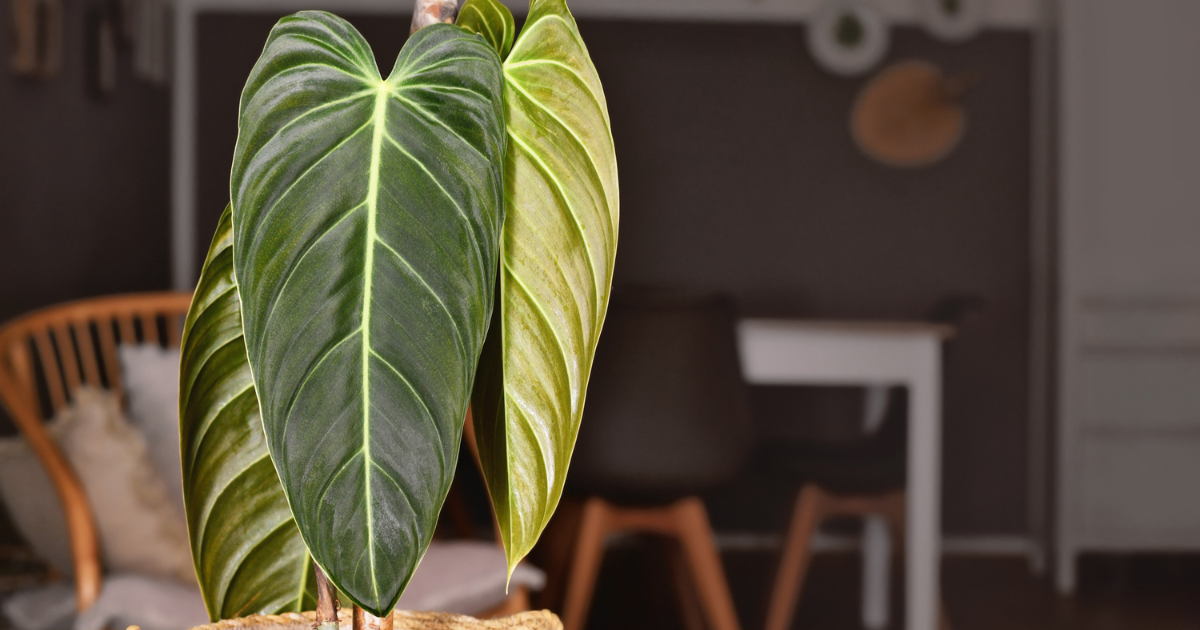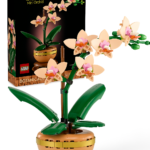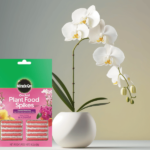Philodendron Melanochrysum, often revered as a botanical masterpiece, has garnered significant attention among plant enthusiasts worldwide. Its lush, velvety leaves and easy-care nature make it a favorite for both beginners and seasoned plant enthusiasts. In this comprehensive guide, we’ll delve into the origins, distinctive features, care tips, and the unique community surrounding the Melanochrysum.

In wrapping up our verdant exploration of Philodendron Melanochrysum, we find a plant that transcends its botanical roots. From its lush foliage to the sense of community it fosters among enthusiasts, this leafy marvel proves to be more than just a houseplant. Philodendron Melanochrysum, with its unique features and versatile care, stands as a testament to the enduring connection between nature and human spaces. Embrace the joy it brings into your home, and let the velvety allure of this botanical wonder weave into the tapestry of your daily life.
About Philodendron Melanochrysum
Philodendron Melanochrysum, a botanical gem, hails from the rainforests of Central and South America. Its distinctive heart-shaped leaves, donned in velvety textures, make it a sought-after plant among enthusiasts. Thriving in tropical climates, this Philodendron boasts impressive sizes, captivating with its unique aesthetic.
Cultivation demands a delicate balance of light, water, and soil conditions. Beyond its ornamental allure, the Melanochrysum contributes to interior design trends, elevating spaces with lush greenery. From propagation techniques to addressing common issues, this plant promises a rewarding journey, welcoming both beginners and seasoned plant lovers into the vibrant world of Philodendron Melanochrysum.
Origins and Habitat
The journey of Philodendron Melanochrysum begins in the rainforests of Central and South America. With origins deeply rooted in these lush regions, the plant has adapted to thrive in a tropical climate. Understanding its natural habitat is crucial for providing the ideal conditions when cultivating this spectacular specimen.

Melanochrysum, with origins deeply embedded in the lush rainforests of Central and South America, unveils a rich history and unique habitat. Flourishing in the tropical climates of countries like Colombia and Ecuador, this botanical marvel has evolved to thrive amidst the dense foliage and diverse ecosystems of its native environment. The plant’s adaptation to these conditions has resulted in its distinctive features, making it a captivating specimen for enthusiasts worldwide. From the shadows of towering trees to the humid undergrowth, Philodendron Melanochrysum has carved its niche in the ecosystem, showcasing a resilient and adaptable nature. Understanding its origins and habitat not only provides insight into its growth requirements but also enhances the appreciation for the intricate dance between this remarkable plant and the ecosystems it calls home.
| Species Information | Philodendron Melanochrysum |
| Scientific Name | Philodendron Melanochrysum |
| Family | Araceae |
| Genus | Philodendron |
| Common Name | Philodendron Melanochrysum |
| Native Habitat | Central and South America (Colombia, Ecuador) |
| Climate | Tropical |
| Leaf Characteristics | Velvety, Heart-shaped, Impressive sizes |
| Light Requirements | Bright, Indirect Light |
| Watering Needs | Moderate, Keep Soil consistently moist |
| Soil Type | Well-draining, Aerated Potting Mix |
| Propagation Methods | Stem Cuttings, Air Layering |
| Popular Varieties | Philodendron ‘Micans,’ Philodendron ‘Pink Princess’ |
| Common Issues | Pests (Spider Mites, Aphids), Root Rot |
| Special Features | Aesthetic Appeal, Air-purifying |
| Role in Interior Design | Decorative Foliage, Trendy Houseplant |
Distinctive Features
One cannot overlook the remarkable features that set Philodendron Melanochrysum apart. Its heart-shaped leaves, often reaching impressive sizes, showcase a deep, velvety texture that captivates onlookers. Exploring the nuances of its foliage is a fascinating journey for plant enthusiasts.
Is Philodendron melanochrysum rare?
Yes, Philodendron Melanochrysum is considered a relatively rare and sought-after plant in the world of botanical enthusiasts. Its scarcity contributes to its allure among collectors. The Philodendron Melanochrysum is not as commonly found in mainstream nurseries or garden centers compared to more common houseplants. Its unique velvety foliage, impressive leaf size, and distinctive appearance make it a prized addition to any plant collection.
The rarity of Philodendron Melanochrysum has led to increased demand and a vibrant collectors’ market. Enthusiasts often value it for its aesthetic appeal, making it a coveted specimen for those looking to add an element of rarity and exclusivity to their indoor jungle. However, the availability may vary, and acquiring this plant can sometimes require patience and persistence in the search.
Is Philodendron melanochrysum hard to grow?

Melanochrysum is not considered particularly challenging to grow, making it a suitable choice for both novice and seasoned plant enthusiasts. This striking plant, with its velvety, heart-shaped leaves, adapts well to a variety of indoor environments. While it appreciates bright, indirect light, it can tolerate lower light conditions, adding to its versatility. Keeping the soil consistently moist without allowing it to become waterlogged is key, requiring a careful balance in watering practices. While Philodendron Melanochrysum prefers higher humidity levels, it can thrive in average indoor conditions with proper care.
Providing support for its large leaves as the plant matures helps maintain its structural integrity. Regular inspections for pests and disease, coupled with prompt intervention, contribute to its overall resilience. With attention to its specific needs, Philodendron Melanochrysum proves to be a captivating and relatively manageable addition to any indoor plant collection.
Cultivation Tips
Creating a thriving environment for your Philodendron Melanochrysum involves a delicate balance of light, water, and soil conditions. Discover the secrets to ensuring your plant flourishes, from choosing the right spot in your home to the best watering practices that mimic its natural habitat.
Here are cultivation tips for Philodendron Melanochrysum presented in point form:
- Light Conditions:
- Provide bright, indirect light.
- Avoid direct sunlight, which can scorch the leaves.
- Temperature and Humidity:
- Maintain a warm environment between 65-80°F (18-27°C).
- Philodendron Melanochrysum thrives in high humidity; aim for 60% or higher.
- Watering Routine:
- Keep soil consistently moist but not waterlogged.
- Water when the top inch of soil feels slightly dry.
- Soil Requirements:
- Use well-draining, aerated potting mix with organic matter.
- Consider adding perlite or orchid bark for better drainage.
- Container and Repotting:
- Choose a container with drainage holes to prevent waterlogging.
- Repot if the plant outgrows its current container, typically every 1-2 years.
- Fertilization:
- Feed during the growing season (spring and summer) with a balanced liquid fertilizer.
- Dilute fertilizer to half the recommended strength to avoid overfeeding.
- Support for Larger Plants:
- Provide support for the plant as it grows larger, especially for the heavy leaves.
- Pruning and Maintenance:
- Trim yellow or damaged leaves regularly.
- Wipe the leaves gently to keep them free from dust.
- Propagation Techniques:
- Propagate through stem cuttings or air layering.
- Ensure each cutting has at least one node for successful propagation.
- Pest Control:
- Monitor for pests like spider mites and aphids.
- Treat infestations promptly with insecticidal soap or neem oil.
- Avoiding Drafts:
- Protect the plant from drafts and sudden temperature changes.
- Monitor Growth Pattern:
- Be mindful of the natural climbing tendency; provide support or stakes if needed.
- Regular Inspection:
- Regularly inspect the plant for signs of stress, pests, or diseases.
Propagation Techniques
Unlock the secrets of propagating Philodendron Melanochrysum, whether you’re expanding your plant collection or sharing the joy of this botanical wonder with friends. Learn about successful methods and practical tips to propagate with confidence.
Here are propagation techniques for Philodendron Melanochrysum along with some tips:
Stem Cuttings:
- Select a healthy stem with at least one node (where leaves and roots develop).
- Use a clean, sharp knife or scissors to make a clean cut just below a node.
- Remove any leaves near the cutting’s base.
- Plant the cutting in a well-draining potting mix or water until roots develop.
- Air Layering:
- Choose a healthy, mature stem with a node.
- Make a small incision or remove a section of the plant’s outer layer.
- Apply rooting hormone to encourage root development.
- Wrap the incised area with moist sphagnum moss and cover with plastic wrap.
- Once roots develop, cut the stem below the air-layered section and plant it.
Propagation Tips:
- Timing:
- Opt for propagation during the plant’s active growing season, typically in spring or early summer.
- Healthy Parent Plant:
- Ensure the parent plant is healthy and free from pests or diseases before taking cuttings.
- Cutting Care:
- Allow cuttings to callus for a day before planting to reduce the risk of rot.
- Rooting Environment:
- Maintain high humidity around cuttings or air-layered sections to encourage root development.
- Warmth:
- Provide a consistently warm environment for cuttings or air-layered portions to aid in rooting.
- Patience:
- Propagation takes time. Be patient and allow roots to establish before transplanting.
- Monitoring:
- Regularly check for signs of root growth or any issues during the propagation process.
- Soil or Water Propagation:
- Choose the method that suits you – either planting in soil or starting with water until roots develop.
How do I make my Philodendron melanochrysum leaves bigger?
Encouraging larger leaves on your Philodendron Melanochrysum involves providing optimal care and creating an environment that promotes healthy growth. Here are some key tips:
- Provide Adequate Light:
- Ensure your Philodendron Melanochrysum receives bright, indirect light. Adequate light is crucial for photosynthesis and robust leaf development.
- Maintain Consistent Moisture:
- Keep the soil consistently moist but not waterlogged. Regular watering helps provide the necessary hydration for the plant’s overall growth, including leaf size.
- Use Quality Soil:
- Plant your Philodendron Melanochrysum in well-draining, nutrient-rich soil. A good soil mix provides essential nutrients for healthy foliage.
- Appropriate Fertilization:
- Feed your plant with a balanced liquid fertilizer during the growing season (spring and summer). Dilute the fertilizer to avoid overfeeding, which can negatively impact growth.
- Warm Environment:
- Maintain a warm environment with temperatures between 65-80°F (18-27°C). Warmer conditions support optimal metabolic processes, including leaf expansion.
- Support for Large Leaves:
- As the plant matures and develops larger leaves, provide support to prevent stress on the stems. Staking or providing a structure can help the plant handle the weight of its foliage.
How big can Philodendron melanochrysum grow?
Melanochrysum is known for its impressive leaf size, and under optimal conditions, it can grow substantial foliage. The size of Philodendron Melanochrysum leaves typically ranges from 1 to 2 feet in length. However, individual plants can exhibit some variability in size, influenced by factors such as environmental conditions, care, and the age of the plant.
Providing the plant with the right balance of light, water, nutrients, and a warm environment can contribute to the development of larger leaves. As the plant matures, it tends to produce increasingly larger leaves, showcasing its full aesthetic potential. Regular monitoring, proper care, and patience will allow your Philodendron Melanochrysum to achieve its maximum leaf size, making it a stunning and eye-catching addition to your indoor plant collection.
Philodendron Melanochrysum Care for Beginners

For those taking their first steps into the world of plant care, this section simplifies the process. Easy-to-follow tips ensure that even beginners can enjoy the pleasures of cultivating and caring for Philodendron Melanochrysum.
Here is a beginner’s guide to caring for Philodendron Melanochrysum presented in points:
- Lighting:
- Place in bright, indirect light for optimal growth.
- Tolerant of lower light conditions but avoid direct sunlight.
- Watering:
- Keep the soil consistently moist but not soggy.
- Water when the top inch of soil feels slightly dry.
- Humidity:
- Philodendron Melanochrysum thrives in higher humidity.
- Consider misting the plant or using a humidifier, especially in drier climates.
- Temperature:
- Maintain a warm environment between 65-80°F (18-27°C).
- Protect from drafts and cold temperatures.
- Soil:
- Use a well-draining, aerated potting mix with organic matter.
- Consider adding perlite or orchid bark for improved drainage.
- Container and Repotting:
- Choose a container with drainage holes.
- Repot every 1-2 years or when the plant outgrows its current pot.
- Fertilization:
- Feed during the growing season (spring and summer).
- Dilute fertilizer to half the recommended strength to avoid overfeeding.
- Support for Growth:
- Provide stakes or support as the plant matures and produces larger leaves.
- Pruning:
- Trim yellow or damaged leaves regularly for a tidy appearance.
- Wipe leaves gently to remove dust.
- Pest Control:
- Keep an eye out for pests like spider mites or aphids.
- Treat infestations promptly with natural remedies or insecticidal soap.
- Monitor Growth:
- Observe the plant’s growth pattern and adjust care accordingly.
- Ensure it has enough space as it develops.
- Learning the Plant:
- Familiarize yourself with the specific needs and appearance of Philodendron Melanochrysum.
- Regularly check for signs of health or stress.
Common Issues and Solutions
Even the most devoted plant parent encounters challenges. Explore the common problems faced by Philodendron Melanochrysum owners, from pest infestations to diseases. This section provides practical solutions to keep your plant thriving.
Philodendron Melanochrysum in Interior Design
Beyond its botanical allure, Philodendron Melanochrysum has found a place in interior design trends. Discover innovative ways to incorporate this leafy marvel into your home decor, creating a harmonious blend of nature and style.
Philodendron Melanochrysum, with its lush, velvety leaves, has become a coveted element in interior design. The plant’s unique aesthetics and easy-care nature make it an ideal choice for enhancing indoor spaces. Whether cascading from hanging planters or elegantly positioned in corners, the Philodendron Melanochrysum adds a touch of tropical sophistication. Its versatility allows it to seamlessly blend into various design styles, from modern to bohemian. This botanical marvel not only elevates the visual appeal of interiors but also contributes to creating a harmonious and refreshing atmosphere, making it a popular choice among interior decorators and plant enthusiasts alike.
Benefits Beyond Aesthetics
Philodendron Melanochrysum offers more than visual appeal. Dive into the potential health benefits it brings to indoor spaces, contributing to improved air quality and overall well-being.
Beyond its captivating beauty, Philodendron Melanochrysum offers a host of benefits that extend beyond mere aesthetics. This tropical marvel is recognized for its air-purifying qualities, enhancing indoor air quality by removing pollutants and toxins. Its presence can contribute to a healthier living environment, reducing the impact of common indoor pollutants.
Additionally, Philodendron Melanochrysum has been associated with potential psychological benefits, promoting a sense of well-being and reducing stress. Embracing this plant in your living space goes beyond visual allure, fostering a connection with nature and positively influencing both physical and mental well-being. As a green companion, Philodendron Melanochrysum becomes a source of not just beauty but also holistic enrichment for its owners.
FAQs
How often should I water my Philodendron Melanochrysum?
Adjusting watering frequency based on environmental conditions.
What is the ideal light condition for Philodendron Melanochrysum?
Providing the right balance of light for optimal growth.
How can I prevent common pests on my Philodendron Melanochrysum?
Implementing preventive measures and natural solutions.
Can I grow Philodendron Melanochrysum in low-light conditions?
Exploring options for less naturally lit spaces.
What makes Philodendron Melanochrysum a sought-after plant for collectors?
Understanding the unique features and rarity that appeal to collectors.
Conclusion
In conclusion, Philodendron Melanochrysum stands as a leafy marvel, captivating plant enthusiasts with its beauty and ease of care. Whether you’re a seasoned collector or a beginner looking for a vibrant addition to your home, this botanical wonder offers a rewarding journey. Embrace the lush world of Philodendron Melanochrysum and witness the joy it brings to your living space.







